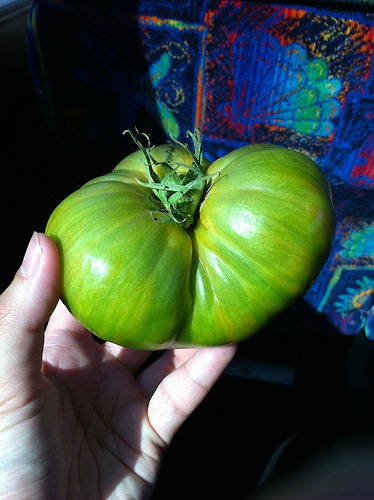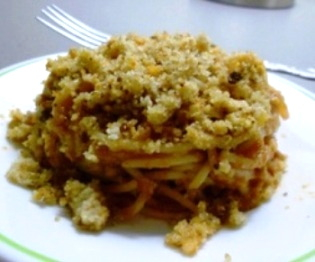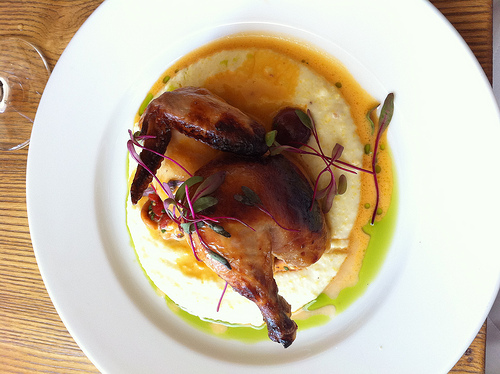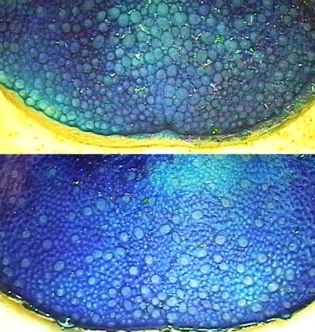Food Studies features the voices of 11 volunteer student bloggers from a variety of different food- and agriculture-related programs at universities around the world. You can explore the full series here.
 Dinner at Ella’s in Sacramento was a first for most of us: a meal prepared with majority local ingredients.Photo: Peiwen LeeLast year, I was one of the first 33 students to enroll in the pioneer class of the brand new Singapore campus of the Culinary Institute of America (CIA). Singapore has long been known as the food mecca of Asia, and the people here can seriously eat a lot, but I quickly discovered that culinary school is more than just cooking.
Dinner at Ella’s in Sacramento was a first for most of us: a meal prepared with majority local ingredients.Photo: Peiwen LeeLast year, I was one of the first 33 students to enroll in the pioneer class of the brand new Singapore campus of the Culinary Institute of America (CIA). Singapore has long been known as the food mecca of Asia, and the people here can seriously eat a lot, but I quickly discovered that culinary school is more than just cooking.
I have to admit that I applied to the Culinary Institute on a whim. I was three years into a career in market research, crunching numbers about why customers bought what they bought and whether they were satisfied with their purchases. I expected my classmates to be like the people I saw on TV shows like Hell’s Kitchen or Master Chef, but it turned out at least half of us came from completely non-food backgrounds, from engineering to ship-building.
All we had in common was a passion for food and cooking. Mine started during the two years I spent as an undergraduate in Perth, Australia. I learned to cook and bake, inspired by my housemates, my part-time job in a café, and, most of all, by Australia’s wonderful fresh produce. It was the longest time I had been away from the comforts of my mother’s cooking, so my instinct was to try and recreate it. It wasn’t long before I realized that the reason why my food tasted so good was because the local produce was so fresh, rather than because I was a natural chef!
For a lot of us in Singapore — a tiny country that has to import almost all of its resources — it’s hard for us to picture the entire food system, much less think about whether what we are eating is good for us or not. The biggest lesson I’ve learned at the CIA is that there’s much more to food than just what appears on the dinner table. I imagined I would be learning about seasoning and sauces — and I am — but I’m also reading Michael Pollan and Amy Trubek and beginning to appreciate and even understand the effort that goes into raising food, and the impact that can have on the world.
As I’m writing this, our class is on a three-week field trip, immersing ourselves in the Northern California farm-to-table movement. We have been to farmsteads, food processing plants, and bakeries, and dined at far too many good restaurants. It has been surprising to see how much many of the food producers care about the quality of their product and the sustainability of their business — this is not something I’ve ever encountered in Singapore simply because we have almost zero agriculture.
 My first heirloom tomato: ugly, but delicious!Photo: Peiwen LeeOn the same note, another first for many of us would just be having meals where most of the ingredients were sourced locally. But the most amazing thing I have seen here is just how many types of heirloom tomatoes there are! In Singapore, those tomatoes would probably never survive on the supermarket shelf — they don’t look too aesthetically pleasing. Ironically, however, they seem to taste the best, turning many of us tomatophiles when we weren’t before.
My first heirloom tomato: ugly, but delicious!Photo: Peiwen LeeOn the same note, another first for many of us would just be having meals where most of the ingredients were sourced locally. But the most amazing thing I have seen here is just how many types of heirloom tomatoes there are! In Singapore, those tomatoes would probably never survive on the supermarket shelf — they don’t look too aesthetically pleasing. Ironically, however, they seem to taste the best, turning many of us tomatophiles when we weren’t before.
At the end of my course, I’m actually not looking to become a restaurant chef. I’m increasingly interested in a career in research and development, with the goal of providing healthy and affordable food to the mass market. But right now, I’m really beginning to understand how significant local context is in shaping our understanding of food. By studying in an American culinary institution in Singapore, I feel like I’m getting a new perspective on both countries’ relationship with food.




